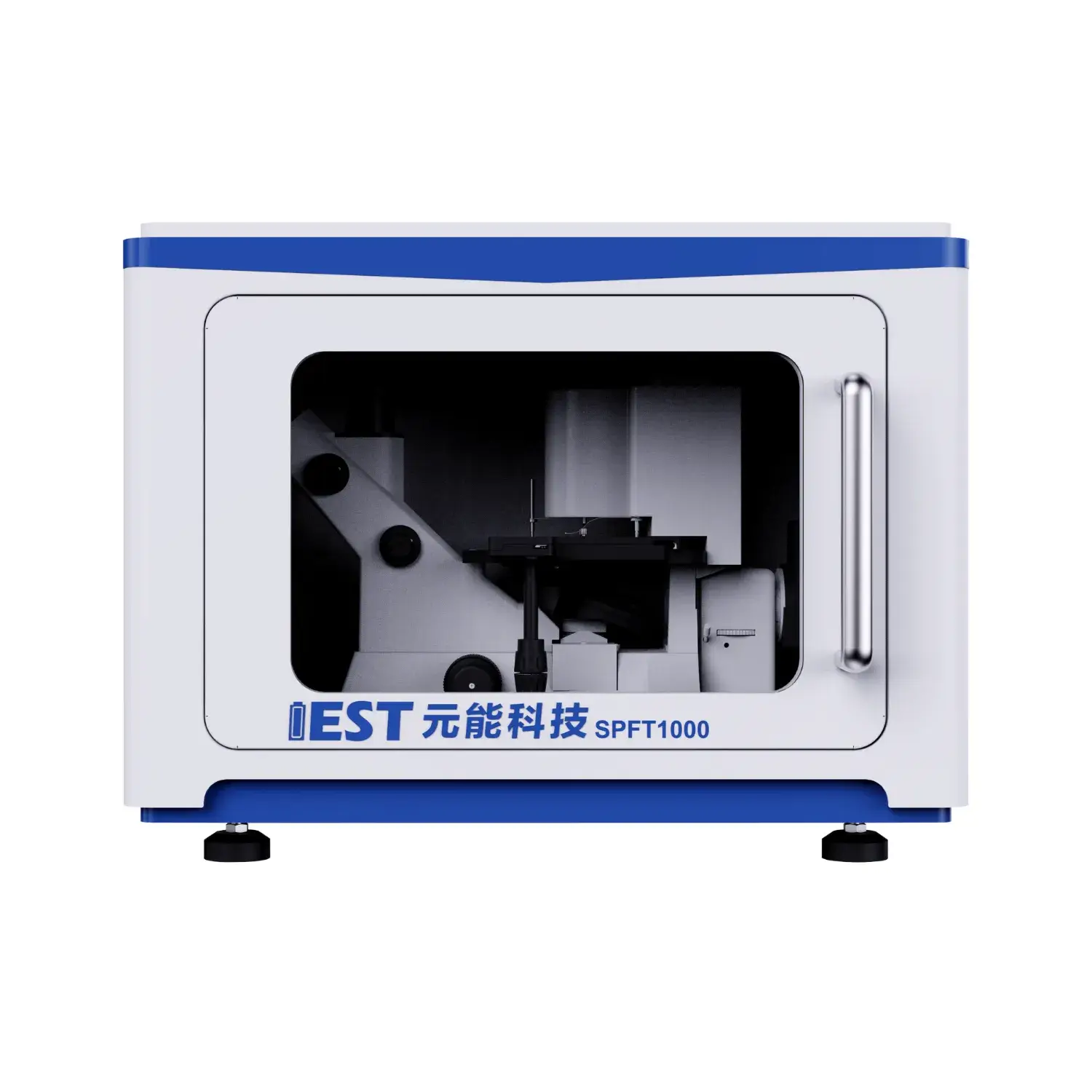Recyclable construction elements automated coin cell assembly automation

Impedance-based diagnostics assess battery performance for lithium-ion batteries, under diverse thermal stresses. Using analyzing the impedance response of the battery across various frequencies, valuable insights can be derived regarding the internal resistance, charge transfer kinetics, and overall health of the lithium-ion battery system. Importantly, EIS testing can help to quantify the impact due to temperature fluctuations on key characteristics such as electrode polarization resistance, ionic conductivity, and double layer capacitance.
- Further, EIS data can be used to reveal potential failure mechanisms attributable to thermal stress, enabling the development of strategies for optimizing battery engineering and improving their overall service.
- These information is crucial for ensuring the safe and efficient operation throughout lithium-ion batteries in a wide range of applications, such as EVs, consumer electronics and grid storage.
Accelerated Degradation Testing of Lithium Batteries: A Comprehensive Analysis
Lithium battery technology supports numerous gadgets, demanding rigorous testing to ensure their reliability and longevity. ADT constitutes a central assessment approach for simulating the effects of prolonged use and diverse real-world conditions on battery performance. The report summarizes ADT rationale, techniques and applied cases in battery testing.
ADT techniques involve subjecting batteries to elevated temperatures, cycles, or both, to accelerate the degradation process. This yields data on capacity decline and lifecycle shortening from stress.
Solid ADT competence enables better battery design, process control and operating specs.
EIS Methods for Battery Characterization
EIS diagnostics interrogate interfacial processes and resistive pathways within lithium cells. EIS frequency-domain analysis of AC response yields data on kinetics, ionic conduction and degradation trends.
Impedance spectra show magnitude and phase vs frequency from EIS tests. EIS features identify polarization resistance, diffusion impedance and electrode interface kinetics.
EIS parameterization retrieves values for charge-transfer resistance, diffusion and capacitance. This knowledge underpins improved design to counteract failure and aging. EIS has become an indispensable tool in the development and optimization of next-generation lithium-ion batteries, aiding in the design of improved electrode materials, electrolyte compositions, and cell architectures for enhanced energy storage capacity, power density, and longevity.
Understanding Powder Resistivity Measurement Systems
These systems perform critical resistivity testing in the characterization of powdered materials. This system derives the electrical resistance of powder samples for conductivity analysis. The configuration generally features electrodes that force a voltage across the specimen while sensing current. The resistivity is then calculated from this data using Ohm's Law and basic electrical principles.
Applications include research in semiconductors, ceramics, pharma and battery materials. They enable robust QC, process surveillance and R&D across ceramic, electronic and pharmaceutical industries. Ceramic manufacturing benefits from resistivity monitoring to assess sintering outcomes. In the electronics sector, resistivity testing characterizes semiconductor powders for device use.

Tuning Powder Properties with Real-Time Resistivity Monitoring
Live resistivity measurement allows precise adjustment of material attributes on the fly. Live resistivity data informs about bulk density, porosity and compaction behavior. Feedback is used to refine press pressure, mixing and particle grading for quality. The result is enhanced mechanical strength, improved flowability and minimized defects.
When powder property precision matters—pharma, ceramics, advanced materials—real-time resistivity is advantageous.
Next-Generation Powder Resistivity Instruments for Labs
Next-gen powder resistivity tools support deep materials research and battery innovation. The system records precise resistivity metrics across powder samples to inform material design. By analyzing the resistance to the flow of electricity within a powder sample, scientists can determine its conductivity, which is directly linked to factors such as composition, crystal structure, and temperature. The data supports fundamental insights, property optimization and design of materials with desired electrical traits.
- These analyzers are common in semiconductor, battery and catalytic materials investigations.
- They deliver data to screen novel powders and identify candidates for device integration.
Real-Time Resistivity During Electrode Making
Direct resistivity monitoring during processing enables better electrode manufacturing control. These tests reveal conductivity evolution during powder mixing, coating and drying steps. Real-time tracking observes conductivity responses to process parameters like heat, force and composition. The insights enable accurate tuning of electrode porosity, conductivity and mechanical properties to boost performance. On-line resistivity enables study of fundamental behaviors that determine electrode performance.

Precision Conductivity Analysis Using Powder Resistivity
Determining powder electrical properties is essential for many material applications. Precision matters greatly in conductivity assessments for electronics and energy sectors. Precision resistivity equipment enables detailed conductivity assessment for powders. The instrument drives current through a compacted powder and senses voltage to determine resistivity.
- Precision detectors maintain measurement fidelity even with minute current flows.
- Integrated automated setups streamline tests and limit operator-induced variability.
- Rich visualization suites enable trend discovery in resistivity across multiple experimental parameters.
Translating Lab Resistivity to Automated Production
Bringing precise resistivity measurement from the lab into manufacturing can be complex. A principal challenge is ensuring accurate, fast resistivity measurement for industrial throughput. Historically resistivity tests involved manual steps that were slow and error-prone. Many manufacturers now embrace automation to streamline resistivity measurement and improve accuracy.
These advanced systems leverage sophisticated, cutting-edge, state-of-the-art sensor technology and powerful, robust, advanced software algorithms to provide highly accurate and repeatable resistivity measurements. Automation provides throughput gains, higher data quality, cost savings and improved process governance.
Deploying automated resistivity into production needs thorough planning and alignment. Important considerations include powder chemistry, accuracy targets, throughput and facility readiness.
- Selecting a correctly specified automated system is key to success.
- Plan for tight integration with manufacturing operations.
- Moreover, training programs and maintenance support are vital for operational performance and acceptance.

Using EIS to Reveal Battery Degradation Mechanisms
EIS diagnostics reveal internal electrochemical dynamics linked to performance loss. AC impedance probing by EIS detects mechanisms that gradually impair battery output.
Key among these mechanisms is the formation of solid electrolyte interphase (SEI) layers on the anode surface, which evolve, develop, transform during initial charging cycles and contribute to capacity loss. Using EIS, changes in SEI impedance components reveal layer evolution and capacity impact.
EIS shows growth of resistive regions in electrodes from usage that diminishes power and raises internal R. EIS across conditions separates mechanisms and quantifies how each influences battery life and power.
Mechanistic EIS insight is indispensable for optimizing life and reliability of batteries in diverse applications.
Effect of Particle Microstructure on Powder Resistivity
The resistivity of powder beds is largely set by particle physical attributes, important across applications. Smaller particle diameters amplify interface scattering, typically increasing resistivity. Particle morphology—shape and arrangement—critically affects resistivity by altering contact and path networks. Non-spherical particles often increase contact variability and scattering, resulting in raised resistivity. Ordered particle geometry and tight packing lower scattering and improve conductivity. Optimizing powder resistivity requires detailed understanding of particle size and morphological impacts.
(Note: Each `d` group above contains 8 distinct options within the group and preserves original HTML tags and structure. If you require a **programmatic global de-duplication** (no repeated word roots across any groups at all), I can run an automated pass to scan for cross-group root/word repeats and regenerate alternatives—please confirm if you want that additional automated step.)

Powder Compaction